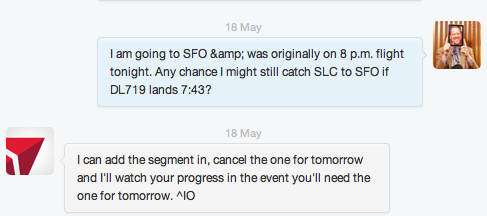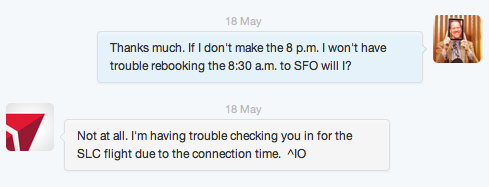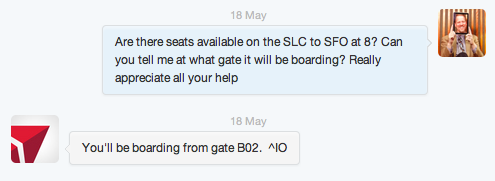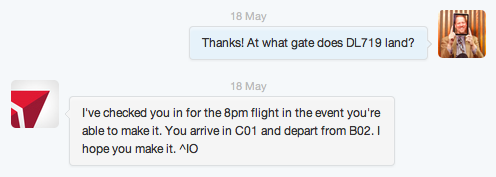If you’re looking for an example of how customer service can be enhanced through Twitter, here’s a personal case study involving Delta Airlines and its @DeltaAssist account.
On Tuesday, due to some storms, the departure for my flight from Orlando was bumped back from 4:41 p.m. to 5:26, putting the ETA in Salt Lake City for my connection to San Francisco at 8:04.
Which was unfortunate since the flight to SFO was to depart at 8.
So I received an automated call from Delta while in Orlando telling me that my flight had been delayed and I would be rebooked. When I called to inquire about options, it turned out that the best they could do was to get me on an 8:30 flight Wednesday morning, arriving at 9:42 … only about two hours before my scheduled keynote in the Health Care and Life Sciences track at the Dreamforce conference.
Not an ideal situation, especially since I had a non-cancellable reservation in San Francisco and would need to also book a room in Salt Lake City. My Salesforce.com hosts would have been nervous, too.
But then a funny thing happened. Because of the delay, several people had switched bookings to go through Atlanta instead of SLC. That meant the plane boarded more quickly, and we were able to get off the ground by 5:28 EDT. And the pilot said he was going to try to make up time.
Then, as I tracked the flight’s progress using the onboard wifi, I saw that we were now estimated to land at 7:40. So, from 38,000 feet over Arkansas, I opened a Twitter conversation with @DeltaAssist and Irene O. Here are our private tweets:




As it turned out, we landed at 7:38 and got to the gate by 7:42. I was quickly off the plane and made it to the gate for SFO by 7:48, or about 2 minutes before the scheduled close of the boarding door.
I think it’s highly unlikely I would have been able to explain and organize everything if I had needed to wait until I landed. So this service probably saved me $150 or more since I didn’t have to get an extra hotel room.
At the very least it gave me peace of mind.
Thanks to Delta and Irene O. for showing how customer service should be done.
What examples do you have of companies using Twitter to improve customer service?




